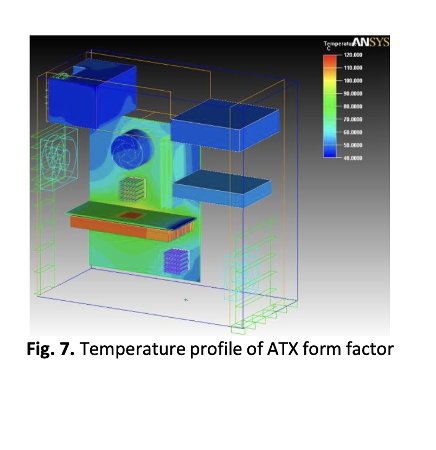Heat Flow in Computer Casing
Keywords:
Heat flow profile, computer casing, computational fluid dynamic softwareAbstract
The purpose of this study was to investigate the heat flow profile inside a computer casing. Through this study, we can also identify which form factor was more efficient in cooling capability. The performance of Advanced Technology Extended (ATX) and its purposed successor, Balanced Technology Extended (BTX) were compared in this study. Simulations were conducted using ANSYS 12, a Computational Fluid Dynamic (CFD) software. Results obtained from the simulation were compared with values in the datasheet to identify its validity. It was discovered that there were more chaos region in the flow profile for ATX form factor. In contrast, BTX form factor yielded a straighter flow profile. Based on the result, we can conclude that BTX form factor had better cooling capability compared to its predecessor, ATX. This was due to the improvement of layout made in the BTX form factor. With this change, it enabled BTX form factor to be used with more advanced components which dissipate more amount of heat. In addition, this also improved the acoustic performance of BTX as the change reduces the number of the fan needed to just one unit for BTX. All together, these advantages made BTX form factor a need for today’s computing world.
Downloads



















